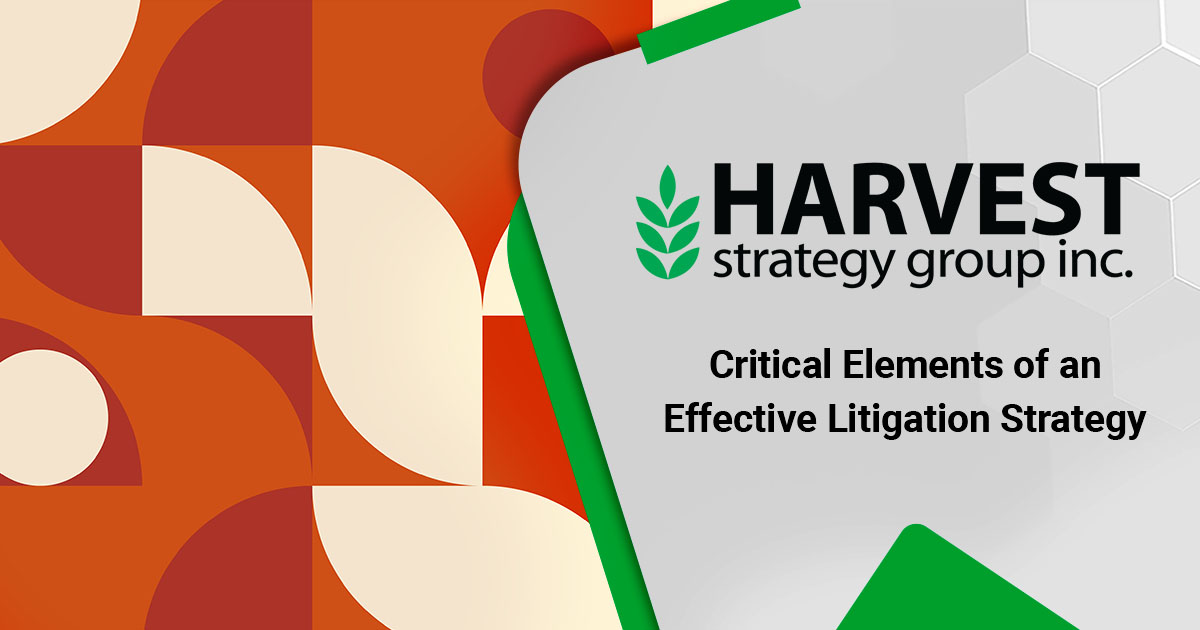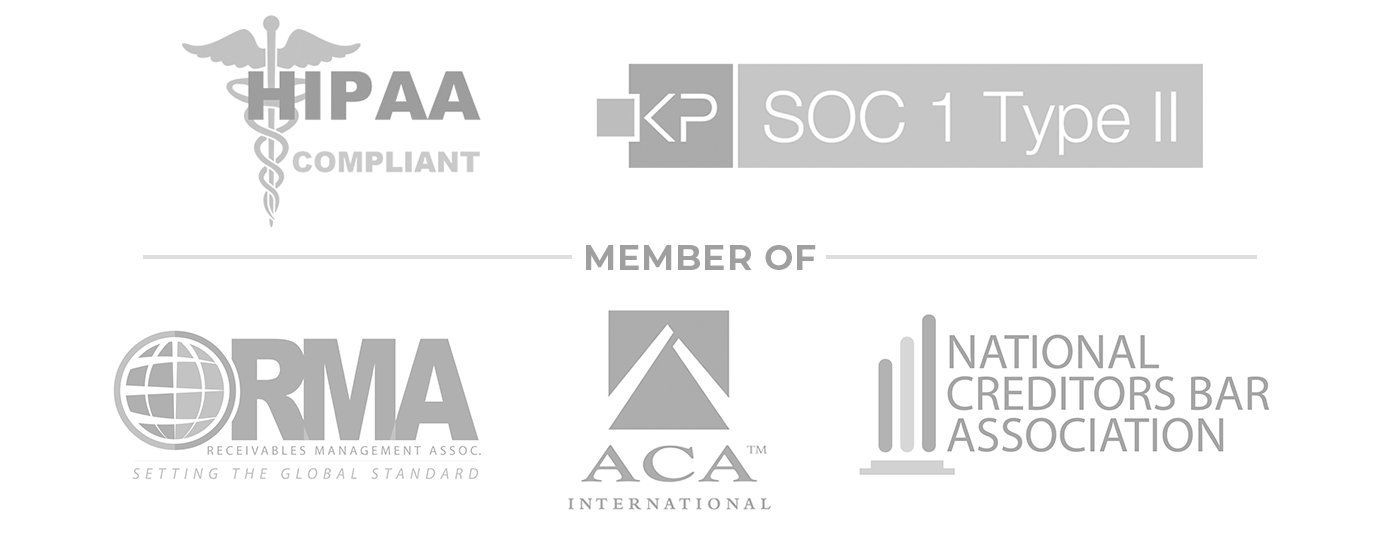Wise investing demands strategy and choosing where to invest into your charged-off receivables for the greatest recovery is not one-size-fits-all. Factors including location, asset class, budget, risk tolerance, and more all need to be considered. Some strategies may outperform others in certain scenarios but may not be ideal for other situations. Weighing out the options can be a challenge with a good decision having no shortage of complexities and nuances. Accounts must be allocated, compliance guidelines followed, logistics in place, and every detail of the process managed. Each portfolio of accounts may require unique treatments and placement strategies to optimize recovery performance.
Beyond performance, there are other areas of critical importance including compliance, quality, and ethics that are essential to the recovery success. Achieving maximum recoveries is important, but true success is measured by ROI which can include many factors. The end goal/necessary final product of distressed portfolio strategy is recovery and return on investment. Diverse asset classes require different methods and means to create optimal cash flow. Sometimes the traditional collection agency approach is not the best fit or the only fit for a specific segment of your account portfolio. If and when litigation is advisable, it’s important to use an effective strategy.
The question is, how and why should you responsibly assess and determine which strategy to employ, when, and with whom?
Litigation is an Investment
While a litigation strategy generally yields higher overall returns, it is also a greater investment and has an elongated liquidation curve. It should be well-planned and well-executed from start to completion and from firm placement to service to post-judgment remedies. Occasional bumps in the process are bound to happen, but hopefully as sparingly as possible, as each one can be costly. Ill-prepared or missing documentation, inconsistent affidavits, actions taken by agitated consumers, and frivolous errors or losses can add up quickly, countering the final return. Minimizing risk and inefficiencies is critical to optimizing return on investment.
The cost associated with pursuing litigation (suit process and filing) is the primary investment, so the selection process is paramount to success. Identifying locations and assets, ensuring appropriate scrubs to identify potential red flag issues (sorting, washing, and removing any high-risk accounts), and overseeing the extensive media process all make the suit process one that must be managed with a hands-on approach. The initial process build-out requires partner firms to have the right geographic areas and jurisdictions of practice, the right processes and procedures in place, and the scalable capacity to handle the specified accounts. Post-onboarding, the process is still not automatic; it takes time, trust, management, and ongoing communication.
Data Shapes Direction
When a creditor is ready to leverage litigation as an option, operational decisions should be based on all of the available data. An effective litigation strategy is preceded by a strong analytics model to help determine account placement and timing. It’s important to have effective platforms and models in place to “crunch the numbers,” reduce human decisions where possible, increase efficiency, and establish consistent, reliable forecasts for scoring and allocation.
Once the data is used to assist with stratification and allocation, it needs to be effectively leveraged and supplemented to draw meaningful conclusions, and then accordingly acted on by the right people at the right time. This calls for effective and compliant asset identification and location systems, integrated data management systems, and a reliable network of partners to move plans into action.
Choice Builds Competition
Building the aforementioned reliable network of partners is a key component of the overall strategy, and that effort in itself is a massive, long-term undertaking and investment. Firm selections must be based on criteria, checks and balances, and compliance—not just performance. There must be detailed due diligence at the point of initial review and onboarding, authentic relationship building, and ongoing compliance and performance oversight during the life of the partnership.
A network should be run in such a quality manner that competing firms desire your business and are willing to accelerate and invest in their operations when necessary, report on their performance, participate in routine audits, and remediate any issues promptly. This requires leadership from a relationship with whoever is managing and measuring the results. Choice builds competition among firms; likewise, firm choice of client partnership drives competition among clients. Therefore, this is another example where “plug and play” is not the winning approach. Effective litigation strategy must include effective management of participating network firms.
Accountability Takes Intentionality
Part of managing means understanding you are not the firm’s only client. There may be competing priorities, varying standards of process, or differing expectations. It’s the role of the client liaison or someone acting on behalf of the client to check in, communicate clear expectations, and maintain accountability. Especially for the suit process, you’ll need to ensure meaningful attorney involvement is present every step of the way.
The process from placement to results can be a long one, taking months or even years. A dry cleaner model of “drop off now, pick up later” generally won’t work well for anyone involved unless someone is dedicated to managing the process at every step. Specialized check-in points, audit and compliance oversight, proactive course correction as needed, and routine KPI measurements are critical. There must be attention to detail and ongoing communication by the right people who understand the process and can drive performance effectively when it comes to matters like jurisdiction-level tracking and management and indicators like speed-to-suit, return-on-costs, and suit/judgment rates.
Harvest Optimal Returns
In light of the complex and specialized nature of effective litigation strategy, it makes sense to work with a team that’s steeped in it. Is it possible to “go it alone,” hire a generalist to use a “boxed formula,” or drop off your accounts to pick up results later? Absolutely, but it is not optimal. It all boils down to what kind of time and resources you have, how large your inventory is, and how much payoff you’re hoping to gain for your investment of time and resources.
Harvest Strategy Group doesn’t just dabble in litigation strategy; we’ve lived and breathed it with a singular focus for 14 years. We understand that consistent effort applied with the right tools, the right people, and the right processes leads to efficient, compliant, reliable results for our clients. Our team serves as managers, not forwarders, and the difference is in the numbers.
“100% of the time, a specialist will outperform a generalist. We’ve been honing our network and knowledge for a long time without other business distractions. What makes us unique is our subject matter expertise and ability to keep our eye on the ball throughout the process. We’re agnostic to geography and we stay nimble with our private owner-operator structure, unbeholden to the private equity world.
Our entire focus is to represent our clients’ best interests. We know how to act on their behalf for the best outcomes and to ensure mutually agreed-upon expectations are met across the board, taking the heavy lifting and demanding involvement off of our clients so they can continue to grow their businesses. Throughout all of it we stay responsive, transparent, and accountable,” said Harvest Strategy Group President, Brad McCurnin.
At Harvest, we aren’t just reporting on client results; we’re driving them. With a time-tested, fire-refined multi-layered tactical strategy, we’ve developed a strong proficiency in what we do.
Harvest Strategy Group’s proprietary Pro-Score data model helps us to ensure the best distribution and direction for each account in our care so that the right channels are being engaged for the right accounts. With the ability to align client needs with specific network participants, we are meaningfully engaged end to end with comprehensive compliance oversight and performance management.
Learn More
If you’d like to learn more about our services, our company, or our history, please visit harveststrategygroup.com. For a no-cost, no-obligation ProScore trial or to discuss how our account management services can help you manage your receivables, please contact Jamie Welsh, VP, Business Development: jamie.welsh@harveststrategygroup.com / (303) 531-0654.
About Harvest Strategy Group
Harvest Strategy Group was founded in 2007 to provide single-point-of-contact, nationwide recovery management services for banks, finance companies, debt buyers, and credit unions. The company fosters an entrepreneurial environment and encourages its staff to challenge boundaries, think outside the box, and feel a sense of ownership and accountability for results. Harvest’s mission is to lead the accounts receivable management industry through strength in partnerships, exceptional service, and the delivery of superior results.

